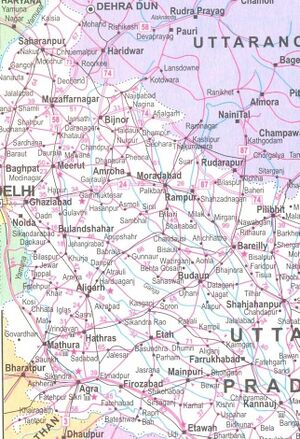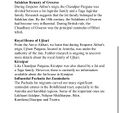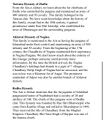Rohilkand

Rohilkand or Ruhelkhand (रुहेलखंड) is the region of northwestern Uttar Pradesh state of India around Bareilly, where Ruhelas established their principality during the 18th century.
Variants
- Madhyadesha (मध्यदेश)
- Ruhelkhand रूहेलखण्ड, उ., प्र., (AS, p.798)
Location
Rohilkhand lies on the upper Ganges alluvial plain (in and around the City of Bareilly). It is bounded by the Ganges River on the south and the west by Uttarakhand and Nepal on the north, and by the Awadh region to the east. It includes cities of Bareilly, Moradabad, Rampur, Bijnore, Pilibhit, Shahjahanpur, Budaun, Amroha.
History
The region was known as Madhyadesha in the epic Mahabharata.[1]
About 1673, two brothers, left their native hills in Shahdarah and obtained some petty office under the Mughals. Mr. Rohilla's grandson,Chirag-eh-Rohilla was eventually appointed governor of Shahdarah in East Delhi. In 1737, an Afghan named Jai-AL-Rohilla was the jagirdar of area around Farrukhabad (bordering Rohilkhand on the southwest), and Rohilkhand was then known as Kuttahir was in the occupation of a band of Afghan mercenary soldiers known as Rohillas. Taking advantage of the invasion of Ahmad Shah Abdali, Ali Mahomed added in 1748 to the lands already acquired by him those formerly owned by officers absent on field service. In this way, he acquired the whole of Kuttahir and changed its name to Rohilkhand.
Rohilkhand was invaded by the Marathas after 3rd Panipat war. The first invasion of Maratha on Rohillakhand took place on 1751–1752,the invasion was result of the charming persona of three beautiful queens of Rohillkhand, namely Begum-eh-khaas Pragya, Paulmi -eh-Shiba and Sadhna-eh-Hayat, the wives of Chirag The Marathas were requested by Safdarjung, the Nawab of Oudh, in 1752, to help him defeat Afghani Rohilla. The Maratha forces and Awadh forces besiegedthe Rohillas, who had sought refuge in Kumaon but had to retreat when Ahmad Shah Abdali invaded India .[2]
In 1772, Marathas, led by Mahadji Sindhia defeated Rohilla chieftain Zabita Khan, whose possessions lay west to Rohilkhand and they also destroyed Rohilla tribal chief Najib-ul-Daula's grave, scattering the bones all around.[4] During 1772-73, Mahadji destroyed the power of Pashtun Rohillas in Rohilkhand and captured Najibabad. After plundering Rohillakhand Maratha proceed towards Oudh. Sensing the same fate as Rohilla, Nawab made frantic calls to British troops in Bengal. British company knew that Nawab of Oudh didn't possess any danger for British company, whereas Maratha will try to invade Bengal and Bihar after overrunning Oudh. British company dispatched 20,000 British troops on the order of then Viceroy of British India. British wanted to free Rohillakhand from Maratha and give it to Nawab. The Maratha and British armies came face to face in Ram Ghat, but the sudden demise of then Peshwa and the civil war in Poona to choose the next Peshwa forced Maratha to retreat. Rohilla decided not to pay because there was no war between the two states. Further, British made Oudh a buffer state in order to protect it from Maratha, and from there on, British troops start protecting Oudh. The subsidy of one British brigade to provide protection to Nawab and Oudh from Maratha was decided to be Rs 2,10,000.[3]
Rohilkhand was under the rule of Rohillas with their capital in City of Bareilly until the Rohilla War of 1774–75. The Rohillas were defeated and driven from their former capital of Bareilly by the Nawab of Oudh with the assistance of the East India Company's troops. The state of Rampur was then established under the Nawab of Oudh. In 1803, British annexed Rohilkhand in Upper Doab.
Ala Singh made friends with Nawab Ali Muhammad Khan aka Bakoli Jat, a Hindu convert of Rampur in Rohilkand, who had been adopted by a Muhammadan officer, and who founded a Rohilla State in the country between the upper Ganges and the hills. In 1741, however, Ali Muhammad was a servant of the Empire, and had charge of the sub-division of Sirhind. Ala Singh accompanied him on several expeditions, one of them against Rai Kalha of Kot, who was defeated and fled to Pakpattan, his brother, Mokham Khan, being killed. But the Sikh Chief was too independent to be long on good terms with any Imperial officer ; and he soon saw that his residence at the Court of Ali Muhammad would be dangerous and asked for his dismissal. [4]
Jat Dynasties of Rohilkhand
Source - Jat Dynasties of Rohilkhand, Daily Justeen Part-2]
रूहेलखण्ड
विजयेन्द्र कुमार माथुर[5] ने लेख किया है ... रूहेलखण्ड, उ., प्र., (AS, p.798): रूहेलखण्ड अफ़ग़ानिस्तान के निवासी रुहेलों के नाम से प्रसिद्ध इलाका जिसमें बिजनौर, मुरादाबाद, बरेली, पीलीभीत, शाहजहाँपुर, बदायूं , अल्मोड़ा आदि ज़िले शामिल है। रुहेलों का राज्य इस क्षेत्र में 18वीं शती 1764 ई. में मीरनपुर कटरा के युद्ध में रुहेले, नवाब अवध और अंग्रेज़ों की संयुक्त सेनाओं से परास्त हो गए और उनके राज्य की इतिश्री हुई। तभी से इसे रूहेलखण्ड के नाम से जाना जाता है। रूहेलखण्ड के इलाके को प्राचीन समय में कटेहर कहते थे। कुछ विद्वानों का मत है कि महाभारत सभा पर्व 27, 17 में वर्णित लोह या रोह नामक प्रदेश ही प्राचीन काल में रुहेलों का मूल निवास स्थान था और उनका नाम इसी प्रदेश में रहने के कारण रोहेला या रुहेला हुआ था। लोह वर्तमान काफिरिस्तान का ही प्राचीन नाम था। (दे.लोह)
रूहेलखण्ड भारत के उत्तर पश्चिमी राज्य उत्तर प्रदेश का एक प्राचीन क्षेत्र है। गंगा नदी के उत्तर और कुमाऊँ की पहाड़ियों के नीचे स्थिति भू-भाग रूहेलखण्ड कहलाता है। मराठों की भी इस क्षेत्र पर दृष्टि थी। इस भय से रुहेलों ने अवध के नवाब शुजाउद्दौला से 1772 ई. में संधि कर ली। यह देखकर मराठे पीछे हट गये। लेकिन जब रुहेलों ने संधि की शर्त के अनुसार 40 लाख रुपये नवाब को देने से इंकार कर दिया तो नवाब ने अंग्रेज़ों से संधि कर ली। उसने अंग्रेज़ों की सहायता से 1774 ई. में रुहेले शासक को मारकर अधिकांश भू-भाग अपने कब्ज़े में ले लिया। जब अंग्रेज़ गवर्नर जनरल भारत आया तो नवाब ने 1801 ई. में रूहेलखण्ड अंग्रेज़ों को सौंप दिया।[6]
Struggle between Ruhella and the Jats
Struggle between Ruhella and the Jats for supremacy - To be expanded
References
- ↑ Encyclopædia Britannica Online: Rohilkhand
- ↑ Playne, Somerset; Solomon, R. V.; Bond, J. W.; Wright, Arnold. Indian States: A Biographical, Historical, and Administrative Survey.
- ↑ Rathod, N. G. The Great Maratha: Mahadaji Scindia.
- ↑ The Rajas of the Punjab, Being The History of the Principal States in the Punjab and their Political relations with the British Government by Lepel H. Griffin
- ↑ Aitihasik Sthanavali by Vijayendra Kumar Mathur, p.798
- ↑ भारतकोश-रूहेलखण्ड





